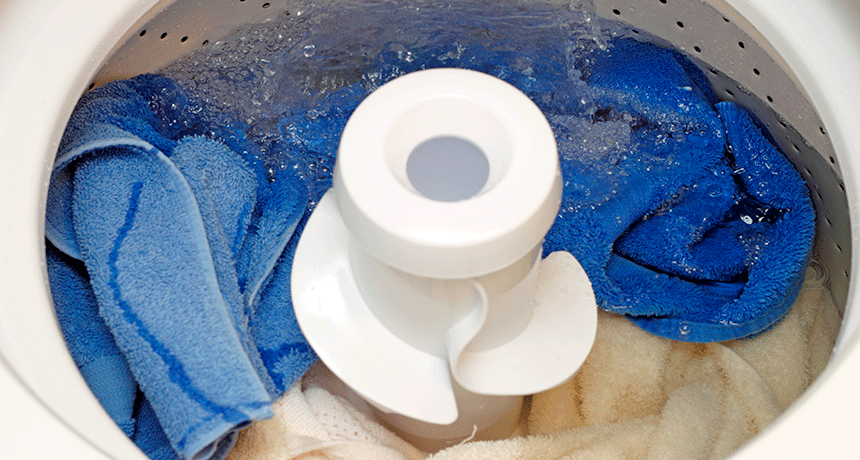Author: Tyler Berrigan / Source: Science News for Students

Believe it or not, laundry wash water can hold a mother lode of silver.
And scientists are looking for ways to recover this precious metal. Their main goal is not to make big bucks selling it to people who make jewelry, coins or pricey flatware. Silver is toxic. So researchers want to catch it before it threatens wildlife. Now, two environmental engineers report preliminary success doing just that.They have developed a way to extract silver from wash water. If the technique proves affordable and reliable, that silver could be recycled for a host of uses. The researchers have just shared their innovation in the January 2 ACS Sustainable Chemistry & Engineering.
For years, companies have added nano-sized bits of silver to all types of products — especially fabrics. Their main aim has been to fight the growth of odor-causing bacteria. That’s why this treatment has been especially popular for athletic wear, such as socks.
Studies soon showed, however, that nanosilver doesn’t stay put. It soon starts washing away in the laundry. Because that wash water ultimately makes its way into rivers, lakes and the ocean, so can the silver. And that could pose risks to wildlife.

“[Researchers] are walking a fine line between silver’s desirable properties and its potential toxicity to the environment,” argues science journalist Silke Schmidt. “Products embedded with nano-silver,” she notes, “tend to lose some of their silver coating every time they’re laundered.”
And stinky germs are not the only things that metal can poison. “Silver is harmful to humans, rats and aquatic species such as zebrafish and rainbow trout,” notes Tabish Nawaz. He’s an environmental engineer who works at the University of Massachusetts in Dartmouth. That same silver also can harm the growth of aquatic embryos, he notes, such as those of developing fish.
To protect all these creatures, he says, that silver needs to be removed from the laundry water before it spills out of a community’s waste-treatment plant. With that in mind, Nawaz teamed up with Sukalyan Sengupta, also at the University of Massachusetts. Together they are fine-tuning a technique to mine that nuisance silver from the laundry.
The trick: Turn to chemistry
Ions are electrically charged atoms…
The post Chemists look to mine silver from laundry wastewater appeared first on FeedBox.